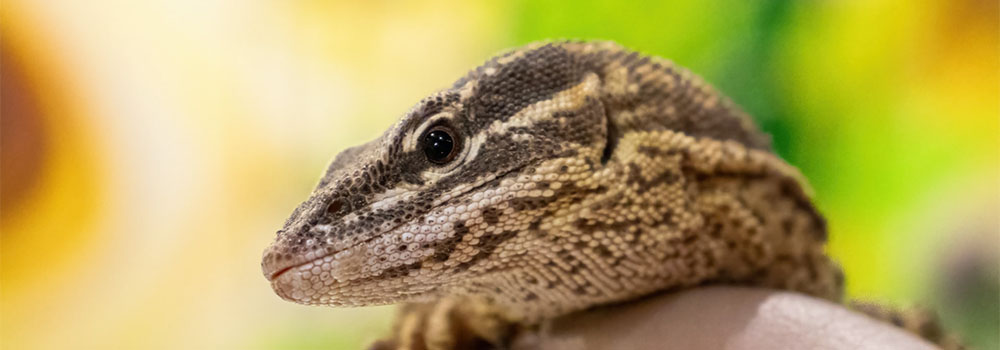How to Care for Your Spiny-Tailed Monitor
29th Jul 2022

5 Tips to Keep Your Pet Healthy and Happy
If you are planning to bring home a spiny-tailed monitor (also known as a ridge-tailed monitor or ackie’s dwarf monitor), congratulations! These special creatures resemble the Komodo dragon—but are a smaller and more manageable size—and are an ideal choice for a first-time monitor owner. Before you bring home your monitor, make sure you are thoroughly prepared to provide for your pet’s needs, including feeding, housing, and more.
At ABDragons, we are big fans of the spiny-tailed monitor and have a few tips to keep your pet healthy and happy.
1. Be aware of your monitor’s full-grown size.
The spiny-tailed monitor’s average size is between 24-28 inches in length. While your pet will be small for a monitor, they will still be a relatively large reptile that requires significant space where they can live, climb, and burrow comfortably. Spiny-tailed monitors can also live for an average of 15-20 years—so your pet will be a long-term investment.
2. Be prepared for your monitor to eat primarily whole prey foods.
Your monitor will prefer to be fed live prey, so you can anticipate needing to order a large volume of feeder insects on a regular basis. (But don’t worry:
ABDragons has you covered.) Some options include:
- Hissing cockroaches
- Dubia roaches
- Lobster roaches
- Crickets
- Mealworms
3. Remember that spiny-tailed monitors like it hot.
Your spiny-tailed monitor’s enclosure should have a basking spot that is between 120 to 150 degrees Fahrenheit. The “cool side” of the enclosure should be a balmy 80 to 85 degrees. Humidity levels are critical to your monitor’s comfort: While you want to keep the substrate in the enclosure slightly damp, you do not want it to be soggy. Pro-tip: Don’t let humidity levels be a guessing game. Use a thermostat and a hygrometer.
4. Make sure your pet’s enclosure mimics their natural environment.
Spiny-tailed monitors originate from the dry scrublands of Australia: Think open fields with grass, rocks, trees, and boulders where monitors burrow to sleep. While you can’t mimic this habitat perfectly, do your best with loose substrate for burrowing and plenty of sticks and plants where they can hide or climb.
5. Encourage your monitor’s natural behaviors to keep them happy.
A bored spiny-tailed monitor will become sedentary, pace in their enclosure, or rub or scratch at the walls. Spiny-tailed monitors need to dig, climb, and explore. They need stimulation and activity to stay happy and healthy, so make sure their enclosure provides those opportunities.
If you have questions about your spiny-tailed monitor’s care or live feeder insect needs, please reach out to our team. We are happy to help.



